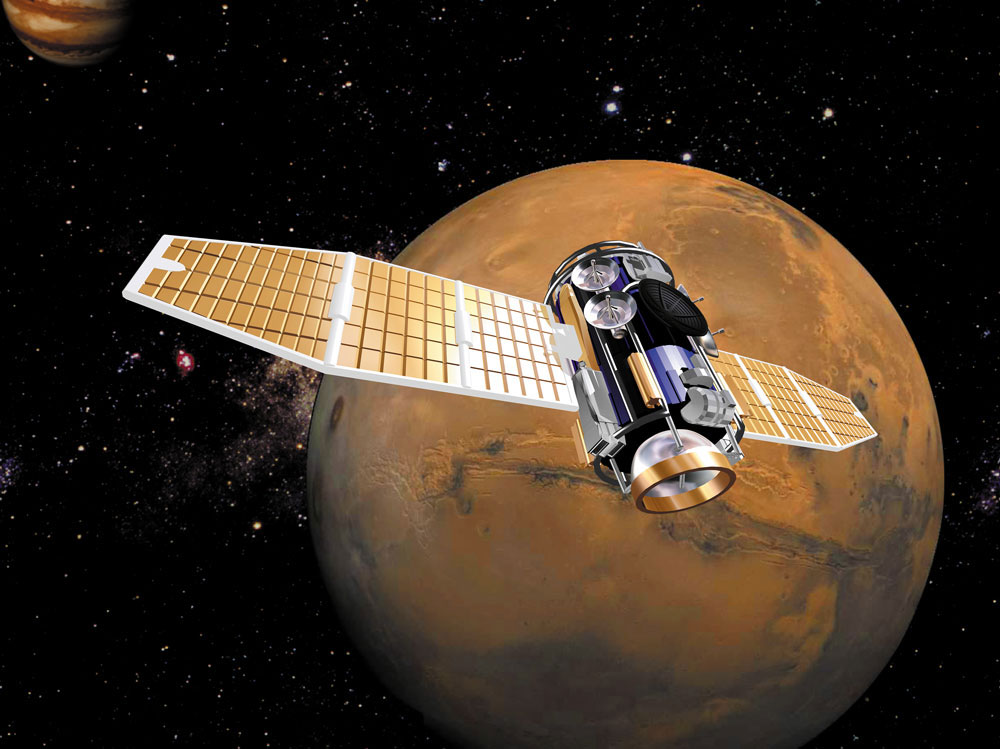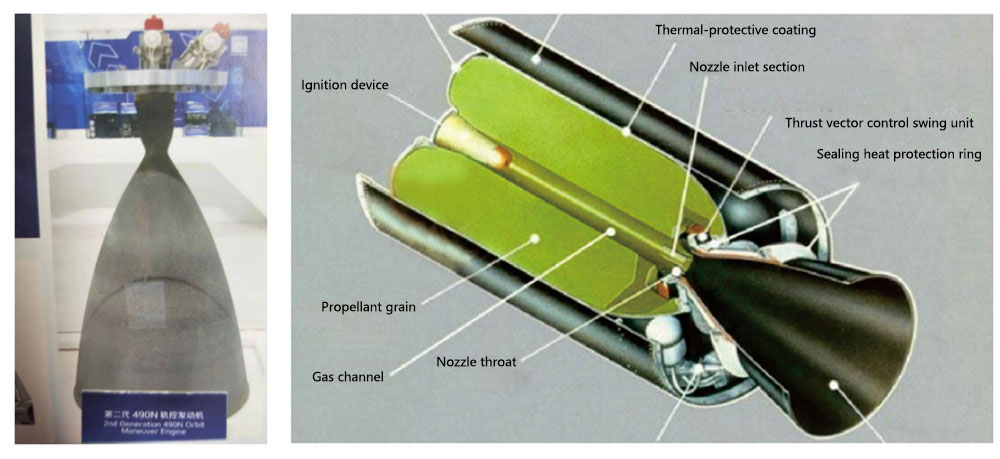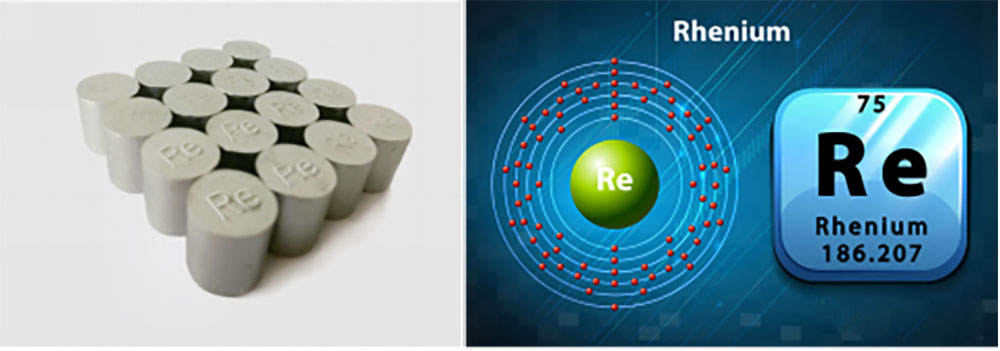Application of iridium-coated molybdenum-rhenium alloy in power plant of satellite attitude orbit control
- Categories:Application Technology
- Author:
- Origin:
- Time of issue:2020-03-04
- Views:0
(Summary description)The universe is the most primitive basis of matter and space. It is infinite, full of infinite unknowns, and has brought a very dreamy imagination to mankind. Faced with the call of stars in the night sky, the temptation of extraterrestrial space makes mankind become more yearning for the universe. After doing a lot of theoretical calculations and practice, scientists discovered that we can launch small celestial bodies to move in the orbit of the earth, thus providing mankind with various information about observing things on the earth from the perspective of extraterrestrial celestial bodies. Since the former Soviet Union launched the first man-made earth satellite, there are now many small man-made satellite partners above our heads. They are continuously transmitting data in the form of electromagnetic waves day and night, mainly for humans. Military reconnaissance, environmental monitoring, data communications, and deep earth observations are alternately transmitting information.
Application of iridium-coated molybdenum-rhenium alloy in power plant of satellite attitude orbit control
(Summary description)The universe is the most primitive basis of matter and space. It is infinite, full of infinite unknowns, and has brought a very dreamy imagination to mankind. Faced with the call of stars in the night sky, the temptation of extraterrestrial space makes mankind become more yearning for the universe. After doing a lot of theoretical calculations and practice, scientists discovered that we can launch small celestial bodies to move in the orbit of the earth, thus providing mankind with various information about observing things on the earth from the perspective of extraterrestrial celestial bodies. Since the former Soviet Union launched the first man-made earth satellite, there are now many small man-made satellite partners above our heads. They are continuously transmitting data in the form of electromagnetic waves day and night, mainly for humans. Military reconnaissance, environmental monitoring, data communications, and deep earth observations are alternately transmitting information.
- Categories:Application Technology
- Author:
- Origin:
- Time of issue:2020-03-04
- Views:0
The universe is the most primitive basis of matter and space. It is infinite, full of infinite unknowns, and has brought a very dreamy imagination to mankind. Faced with the call of stars in the night sky, the temptation of extraterrestrial space makes mankind become more yearning for the universe. After doing a lot of theoretical calculations and practice, scientists discovered that we can launch small celestial bodies to move in the orbit of the earth, thus providing mankind with various information about observing things on the earth from the perspective of extraterrestrial celestial bodies. Since the former Soviet Union launched the first man-made earth satellite, there are now many small man-made satellite partners above our heads. They are continuously transmitting data in the form of electromagnetic waves day and night, mainly for humans. Military reconnaissance, environmental monitoring, data communications, and deep earth observations are alternately transmitting information.

Looking at the world, there are very few countries that can produce and manufacture artificial earth satellites. Among more than 190 countries in the world, only a few countries such as the United States, Russia, China, France, Britain, Japan, India, and Israel have the core artificial earth. With satellite R&D, production, and manufacturing technologies, there are even fewer countries that can stably launch artificial satellites on a large scale. The aerospace level of a country can be fully reflected in the number of satellites launched, performance, stability, and recovery rate.
The emergence of man-made satellites is closely related to military activities. Every man-made satellite manufactured by the Soviet Union in the world, "Mate 1", was successfully launched before October 4, 1957, local time. It also represented the beginning of the space race between the United States and the Soviet Union. It shows that at the beginning of the development of artificial earth satellites, there are extremely high political, military, economic strength, ideology and other fierce competition between big countries and big countries. The successful launch of the first artificial earth satellite prompted the main opponents of the socialist and capitalist camps in the mid to late 20th century to accelerate the development, utilization, and seizure of extraterrestrial space, and at the same time contributed to the development of many space in the later period For example, the "Apollo Project" and "Mars Project" of the United States are the products formed on the basis of the space race.
Low-orbit satellites refer to satellites that operate in corresponding orbits at a height of 200Km-300Km from the earth’s surface. Satellites at this height are mainly military reconnaissance satellites. In order to facilitate military reconnaissance and tracking, the corresponding satellites Increase the power system in the area to better monitor the target in real time. At the same time, because of the lower orbital reconnaissance and tracking of the target is clearer, the image and data are correspondingly less affected by cosmic rays, so it is valued by the United States and Russia. The mobility and flexibility of reconnaissance satellites are the magic weapon to ensure the efficiency and performance of satellites in wars and specific conditions. Low-Earth orbit variable attitude and variable orbit reconnaissance communication satellites have emerged as the times require.
In artificial satellites, there is a power device called the attitude and orbit control system, which can effectively control and adjust the attitude and orbit of the satellite in orbit. According to relevant data, the nozzle used in the current new generation of 490N attitude orbit satellite controller is made of vapor-deposited rhenium metal as the substrate and coated with iridium.

Among refractory metals, the ideal element that forms a nozzle after alloying with molybdenum is rhenium metal, followed by tantalum, niobium, tungsten, titanium, zirconium, and hafnium. Rhenium is one of the metals that can effectively improve the performance of refractory metal DBTT (plastic brittle transition temperature). Through research, it is found that metallic molybdenum and metallic rhenium form an effective alloy. Therefore, adding a certain proportion of metallic rhenium to metallic molybdenum can effectively reduce the DBTT of molybdenum . Mo-rhenium alloy is a binary alloy that combines the properties of two metal materials: molybdenum and rhenium. Mo-rhenium alloy not only has the high-temperature strength and high-temperature ablation resistance of rhenium and molybdenum, but also maintains good mechanics when it is close to the melting point. Performance. In modern satellites, molybdenum rhenium alloys can be used as important high-temperature structural parts and functional parts in new-type spacecraft engines. The main components of the liquid fuel used on the satellite are dinitrogen tetroxide and hydrazine. During the combustion process, high-temperature and high-pressure gas is formed. At the same time, strong corrosive substances are generated to oxidize and ablate the nozzle. And iridium has strong resistance to high temperature oxidation and ablation, so it is used as a surface coating to protect the nozzle matrix molybdenum-rhenium alloy.

The iridium-coated molybdenum-rhenium alloy is an important part of the power plant in the attitude and orbit control system of some low-orbit satellites. The iridium-coated molybdenum-rhenium alloy is based on the molybdenum-rhenium alloy, which is manufactured into a nozzle structure, and then the metal iridium is attached to the surface of the substrate by means of PVD or CVD coating.
The main purpose of spraying iridium is: the liquid fuel used on low-orbit satellites will form high temperature, high pressure and strong corrosive substances during the reaction process. The use of iridium as a surface coating effectively protects the resistance of the molybdenum-rhenium alloy nozzle. Oxidation and corrosion resistance. Because iridium is expensive and dense, it is not cost-effective to use iridium alone as a nozzle. The technology of using molybdenum-rhenium alloy as a substrate and iridium as a coating greatly saves production costs and launching and carrying costs. Compared with fixed attitude and invariable orbit satellites, the emergence of low-orbit attitude control and variable-orbit artificial satellites will greatly increase the use space and living space of satellites.
With the development of China's aviation and aerospace industries, more research and preparation technologies for new materials will be realized. Although there is still a big gap between us and the two major aerospace powers in the world, the United States and Russia, over time, with the launch of a large number of aerospace equipment such as the Chinese space station and the Yutu car as examples, China’s aerospace industry has developed. The speed is amazing.

For high-temperature alloy addition, powder metallurgy, military weapons and equipment, rhenium for aerospace and aviation, please contact Manager Yi 18670328092
Semiconductor electronic materials, rhenium heaters for MOCVD, please contact Manager Zhang 18608419172
Nuclear industry, electric vacuum devices, tungsten rhenium thermocouples, friction stir welding stir heads, special welding electrodes, please contact Manager Chen 18608418245
Scan the QR code to read on your phone
Contact Us
Address: Room 401, Building 10, Xinggong Science and Technology Park, No. 100 Luyun Road, Changsha High-tech Development Zone, Hunan
Email:sales@rheniumet.com

scan it Follow us
Copyright: Hunan Rhenium Alloy Material Co., Ltd. ICP No. 13005464-1 Website construction: www.300.cn



